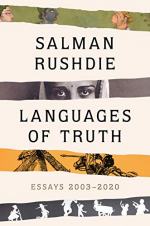|
This section contains 1,469 words (approx. 4 pages at 400 words per page) |

|
Summary
In Part Four, “The Composite Artist: The Emperor Akbar and the Making of the Hamzanama,” Rushdie describes Jalaluddin Mohammed, “known as ‘Akbar,’ ‘the Great,’ and his rise to power in sixteenth century India (285). The era was “a hinge moment in the arts” (286). Although the West “knew . . . little about the East,” the East and West’s “imaginative universes are essentially the same” (287). They share a common “addiction to story” (287).
Soon after “his accession,” Akbar commissioned the “Adventures of Hamza,” or the Hamzanama (287). Over 100 artists contributed to the work, which contained folios and paintings.
Hamza was both historical and fictional. After he died, his adventures became legendary, and his story was converted into heroic and fantastic tales (289).
Rushdie then discusses collectivist approaches to artistic creation. Although authors have studied the interconnection between art and fame, in the case of the Hamzanama artists, almost all of...
(read more from the Part Four Summary)
|
This section contains 1,469 words (approx. 4 pages at 400 words per page) |

|




